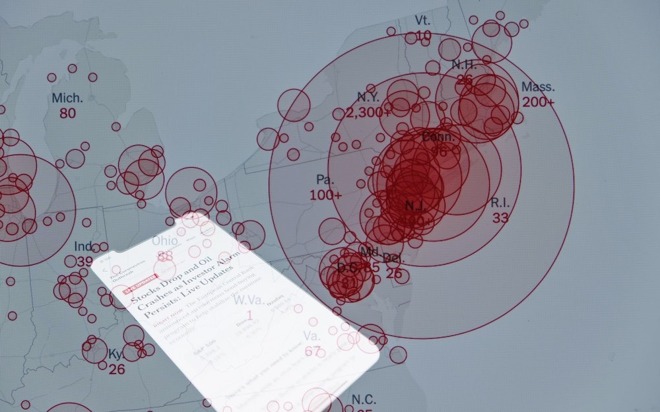University of California San Diego launches Apple-Google framework COVID-19 app
University of California San Diego will launch a new coronavirus exposure notification app designed with the Apple-Google framework, with wide availability by the end of September.

The voluntary program, which will be available to students, faculty, and staff, works the same as many other tracker apps that have been developed this year. While the framework has been available for some time now, California's Department of Public Health has been hesitant to adopt it. UCSD will function as a proof-of-concept that could open up the app to the rest of the state.
As with other trackers, if a person on campus tests positive for the coronavirus, they can opt-in to notify others of potential exposure.
"We then can offer them, as UCSD Health, a key-code to put into the app and it's that key code that starts that anonymous exposure notification process," Dr. Christopher Longhurst, Chief Information Officer of UC San Diego Health.
That person's identity is anonymized during the process, and all information is held on-device, rather than in the cloud. An "exposure token" is exchanged via Bluetooth instead of WiFi or cellular data, and location data is neither gathered, nor stored in any way.
If a participant is within six feet of someone who has registered as testing positive for the coronavirus, they will receive a notification on their phone alerting them of possible exposure.
"The alert that would come up would say something along the lines of, 'you may have been exposed to a person who was diagnosed with COVID,'" explained Longhurst.
The pilot program, said to launch in late September, will last four weeks. If the program proves successful and is approved by the California Department of Public Health, it will be available to all Californians.
A fourth-year student at UCSD told NBC 7 that he was interested in the program, but was wary that the program might put his privacy at risk.
Pennsylvania recently announced that they too would be launching a COVID-tracking app based on the Apple-Google framework.

The voluntary program, which will be available to students, faculty, and staff, works the same as many other tracker apps that have been developed this year. While the framework has been available for some time now, California's Department of Public Health has been hesitant to adopt it. UCSD will function as a proof-of-concept that could open up the app to the rest of the state.
As with other trackers, if a person on campus tests positive for the coronavirus, they can opt-in to notify others of potential exposure.
"We then can offer them, as UCSD Health, a key-code to put into the app and it's that key code that starts that anonymous exposure notification process," Dr. Christopher Longhurst, Chief Information Officer of UC San Diego Health.
That person's identity is anonymized during the process, and all information is held on-device, rather than in the cloud. An "exposure token" is exchanged via Bluetooth instead of WiFi or cellular data, and location data is neither gathered, nor stored in any way.
If a participant is within six feet of someone who has registered as testing positive for the coronavirus, they will receive a notification on their phone alerting them of possible exposure.
"The alert that would come up would say something along the lines of, 'you may have been exposed to a person who was diagnosed with COVID,'" explained Longhurst.
The pilot program, said to launch in late September, will last four weeks. If the program proves successful and is approved by the California Department of Public Health, it will be available to all Californians.
A fourth-year student at UCSD told NBC 7 that he was interested in the program, but was wary that the program might put his privacy at risk.
Pennsylvania recently announced that they too would be launching a COVID-tracking app based on the Apple-Google framework.

Comments
The health department did the test so they know who the patient is. The key-code releases the patients device to start the anonymized process from their phone’s stored data, which is also anonymized. Utilizing unique Bluetooth exchanged tokens.
The health department sends out a message that essentially says “notify these unknown tokens”. No idea who they are – – but they’ll recognize their unique token when it comes by
Your phone quietly in the background recognizes the code — out of the many that roll-on past from the health department. Your phone tells you and nobody else